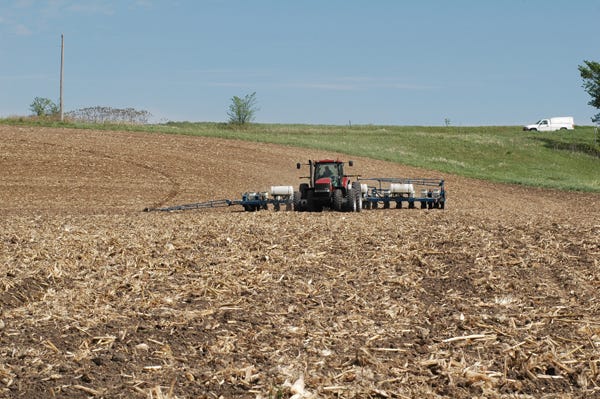March 26, 2018

Think Different
Rather than introduce new products during one-hour winter meetings for customers and prospects, Beck’s Hybrids reports on farmer-focused research it has conducted. If a practice or product has averaged a positive return on investment over 3 years and provided a yield increase each year in replicated studies, it’s designated “PFR Proven” by Beck’s. The Practical Farm Research (PFR) focuses on practices and products that Beck’s research has proven don’t cost a lot and can increase profitability.
---------
Midwest corn and soybean farmers don’t let crazy winter temperatures keep them from attending a wide variety of meetings to catch up on the latest research, technology and management ideas. One such company, Beck’s Hybrids, goes beyond product hype to showcase farmer-focused agronomic research during its more than 100 “PFR Insight” meetings across 11 states.
In 2016, Beck’s conducted more than 100 studies at their 6 PFR research locations across 5 states, and in 2017 the number grew to 114. More than 60 of the studies are replicated at multiple locations.
“You can take results home from these unbiased studies and apply them on your farm to help increase your profitability,” says Jim Schwartz, Director of PFR and Agronomy at Beck’s Hybrids.
At the Colfax, Iowa, PFR meeting on January 9, Beck’s agronomists Wade Kent and Miles McGovney presented some highlights from 2017 and earlier studies.
Two starter bands?
“It’s common to see more roots growing to the side of a traditional 2” x 2” starter fertilizer band. We tested using starter fertilizer on both sides of the seed trench, two inches to the side and below the seed, and found an economic advantage,” Kent said. “By splitting up the applications to both sides of the row, we can safely apply higher rates of fertilizers without fear of burning the roots. In fact, the 60-unit rate (double the normal N units) through the 2x2x2 system was most profitable on both hybrids tested in 2017.”
Kent also said that in 2017, unlike past years, it paid to replant at later dates. “Still, you don’t want to replant corn after June 1,” Kent said.
Even corn emergence critical
McGovney said continued research showed the importance of even emergence in corn. “We saw a 21-bushel yield drop in plants that came up just 24 hours later than the majority,” he said. “Studies showed a 1.5-inch planting depth for corn is often the best depth—deeper, up to 2-inch depth for corn can be advantageous in some cases, but one inch is too shallow.” Ideal planting depth for soybeans is 1.5 to 2 inches as well, McGovney said. “We also saw that a 15-inch row spacing made the most money for producers last year,” he added.
Among other results, Kent and McGovney said Beck’s research shows:
Applying foliar nutrition products in the morning has shown an advantage versus during the heat of the day.
Custom tailoring N rates to each hybrid in every field may pay—their tests show high N response hybrids have higher Economic Optimum Nitrogen Rate (EONR) than N efficient hybrids.
Carrier rate is extremely important in applying fungicides in the presence of disease—good coverage is essential.
SDS seed treatment has shown a yield advantage.
Multiyear PFR data indicates additional N isn’t always necessary with increased corn populations to maximize profitability.
Beck’s printed a 416-page book with results from its 2017 practical farm research projects. It also has 2017 study results highlighted online at
http://bit.ly/Becks2017research
PFR Proven Practices
Beck’s highlighted eight PFR Proven Practices at this year’s meetings, four each for corn and soybeans. If a practice or product has averaged a positive return on investment over 3 years and provided a yield increase each year in replicated studies, it’s designated PFR Proven.
Check out these eight proven practices.
About the Author(s)
You May Also Like




